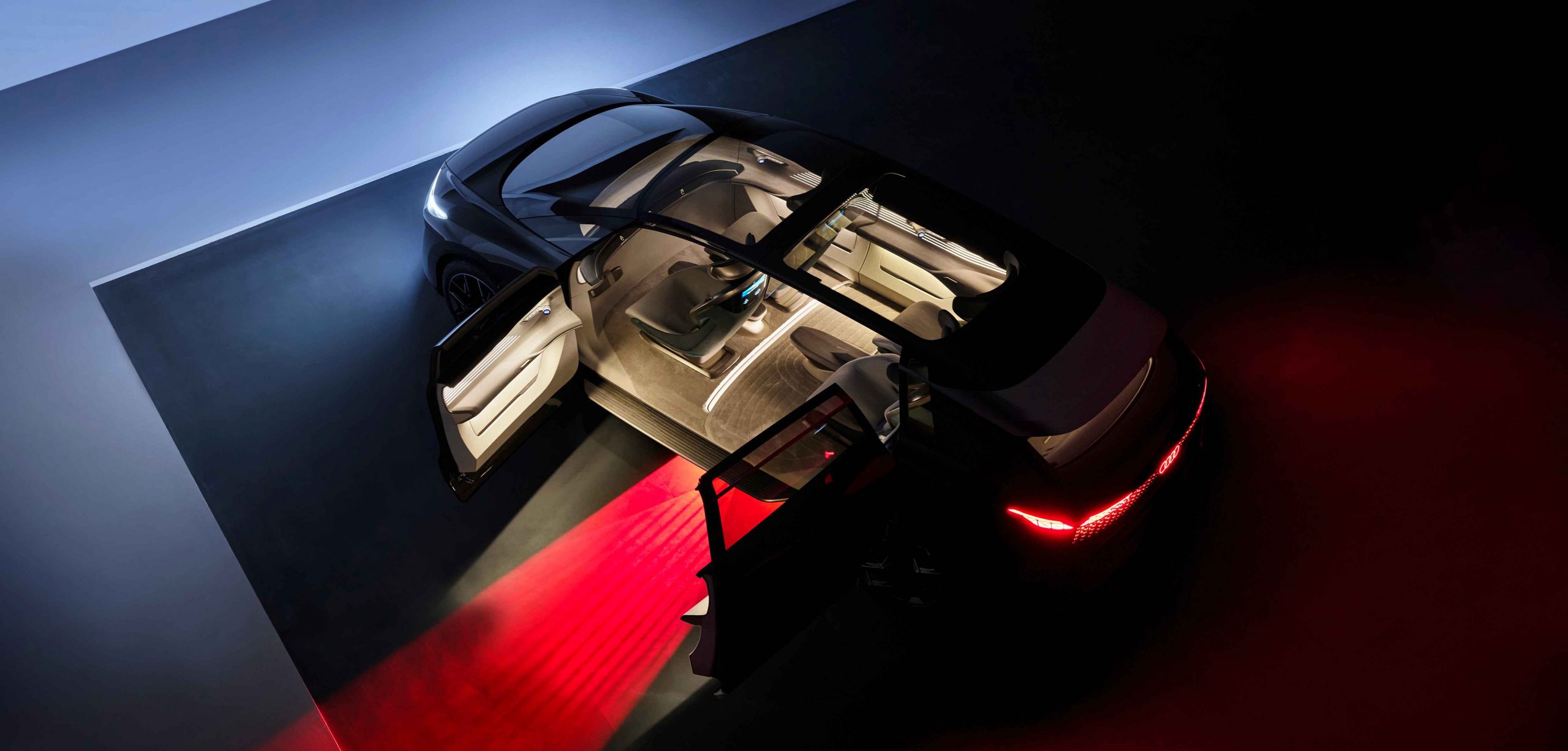Welcome on Board
In August and September 2021, Audi released the first two models of its sphere concept car series: skysphere and grandsphere.
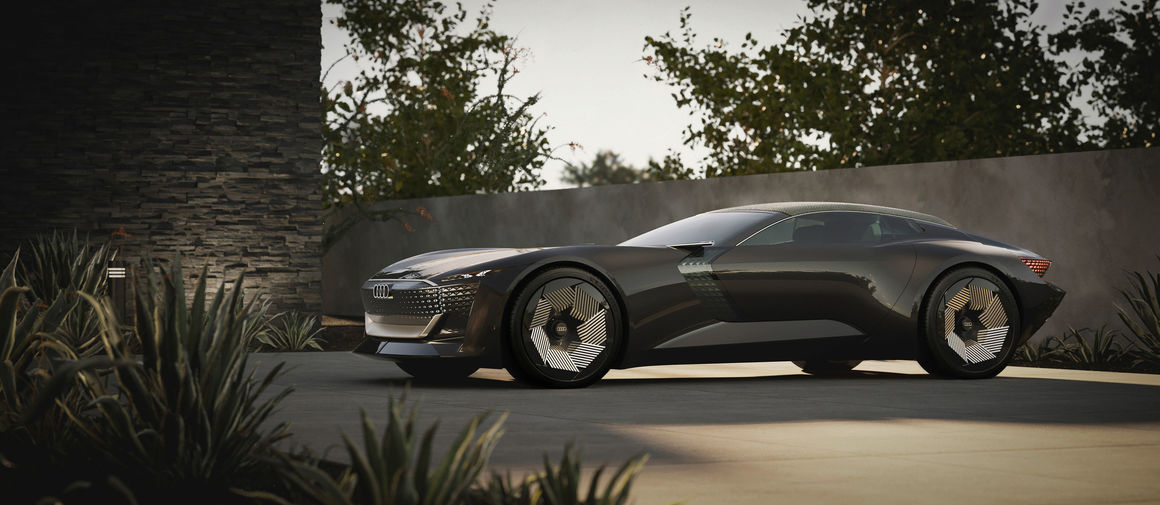
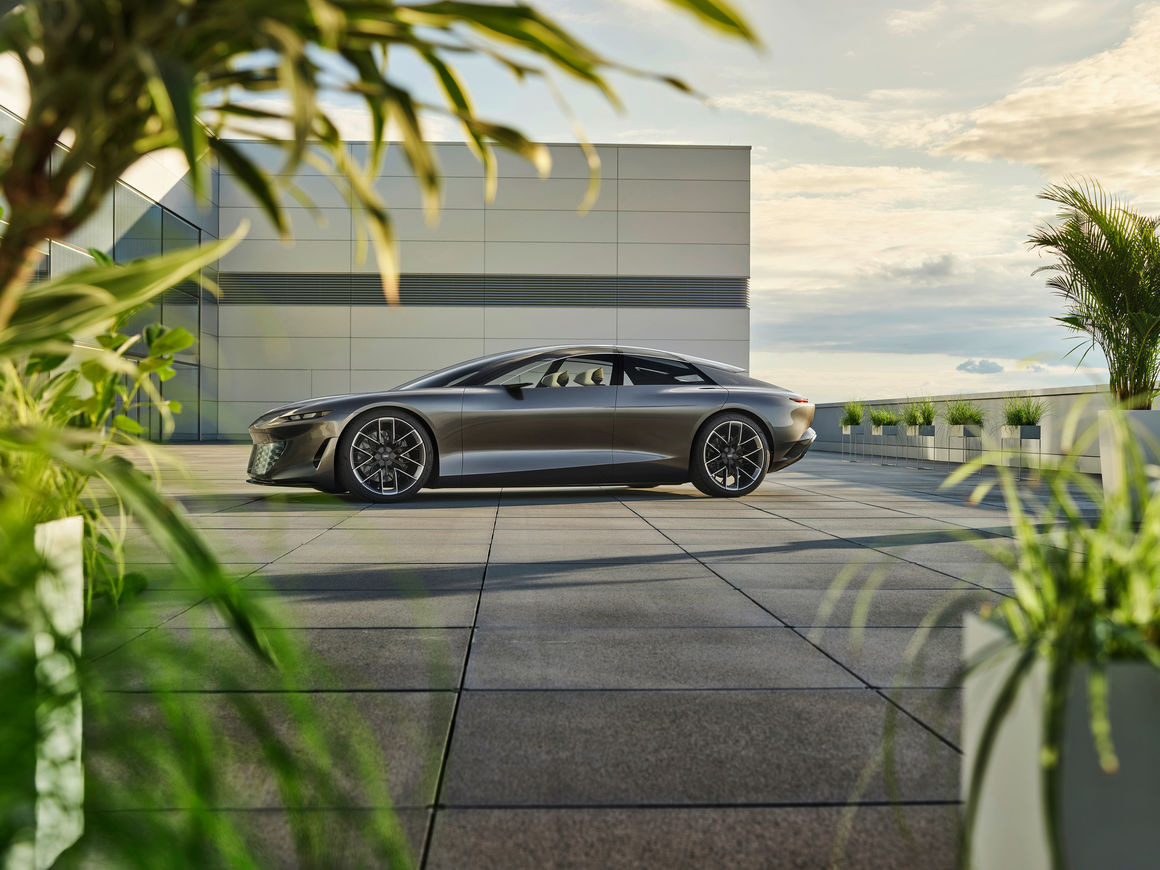
Then, after half a year, on April 19, 2022, Audi unveiled the third sphere concept car, urbansphere, in the form of an MPV.
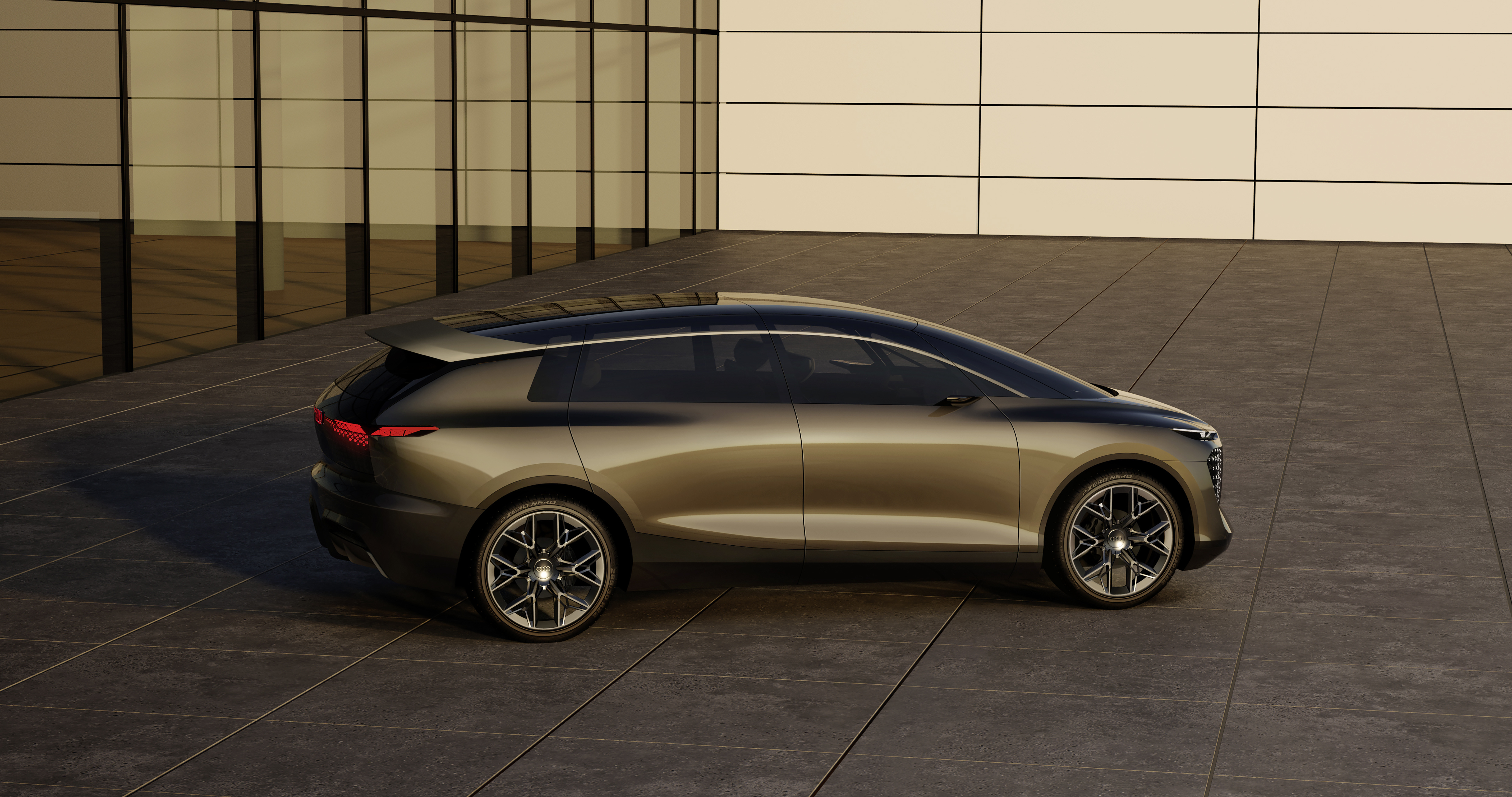
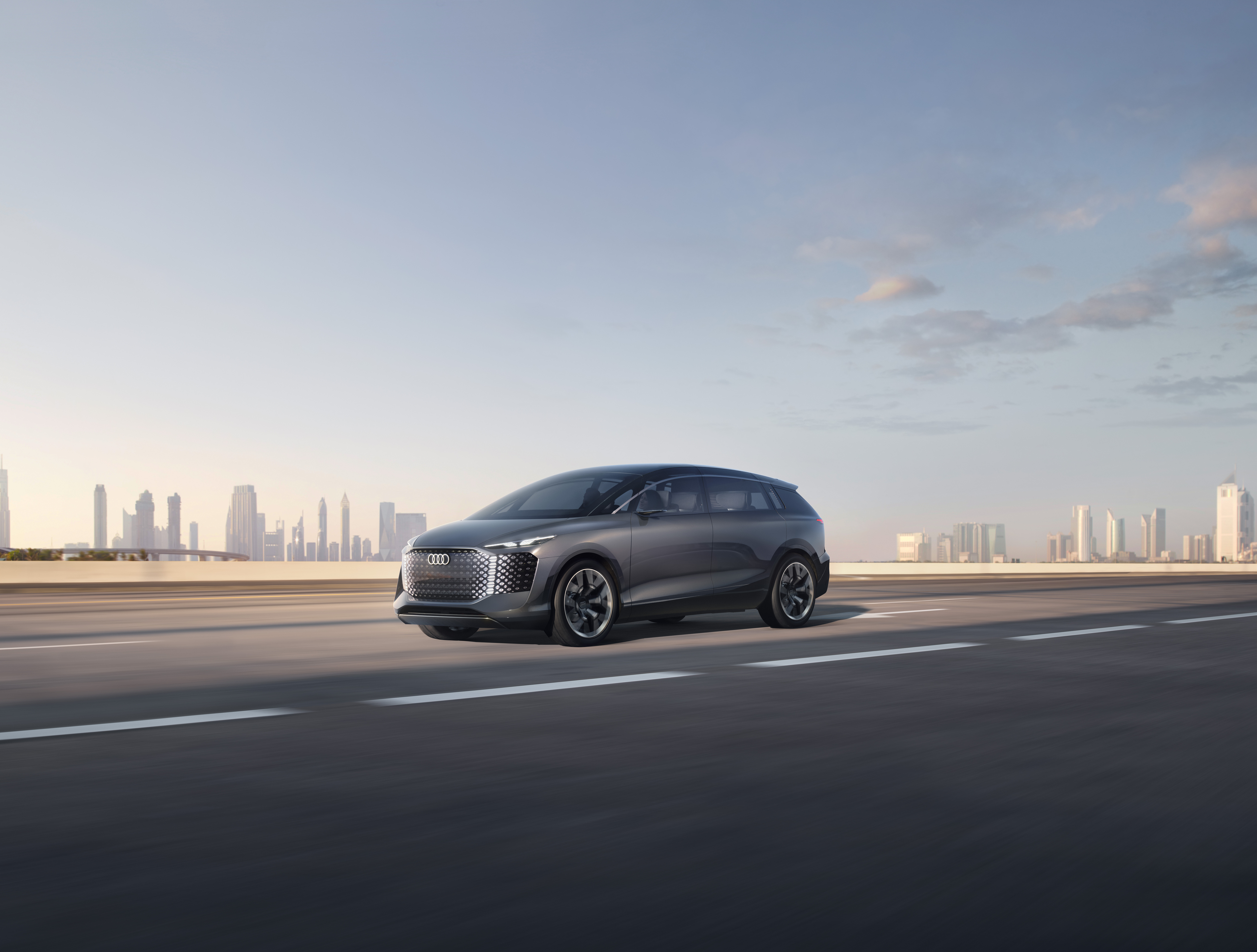
In my opinion, the style of the sphere series is like “olive-shaped metal veins”: the visual effect of the body is relatively flat, without intense lines or clear contrasts, nor highlighting the waistline of the car separately. Instead, the effort is put into the design of the front face, taillights, and rooflines. The use of a metal-colored hook line on the roof of urbansphere has become a signature design of Audi’s new-generation vehicles: grandsphere, urbansphere, and A6 Avant e-tron concept all use this design language. Moreover, the chosen olive-grey car paint highlights the texture of the roofline, making it particularly prominent. I think Audi has no reason to repeatedly emphasize an element that will not be used as a new family logo design in three concept cars.
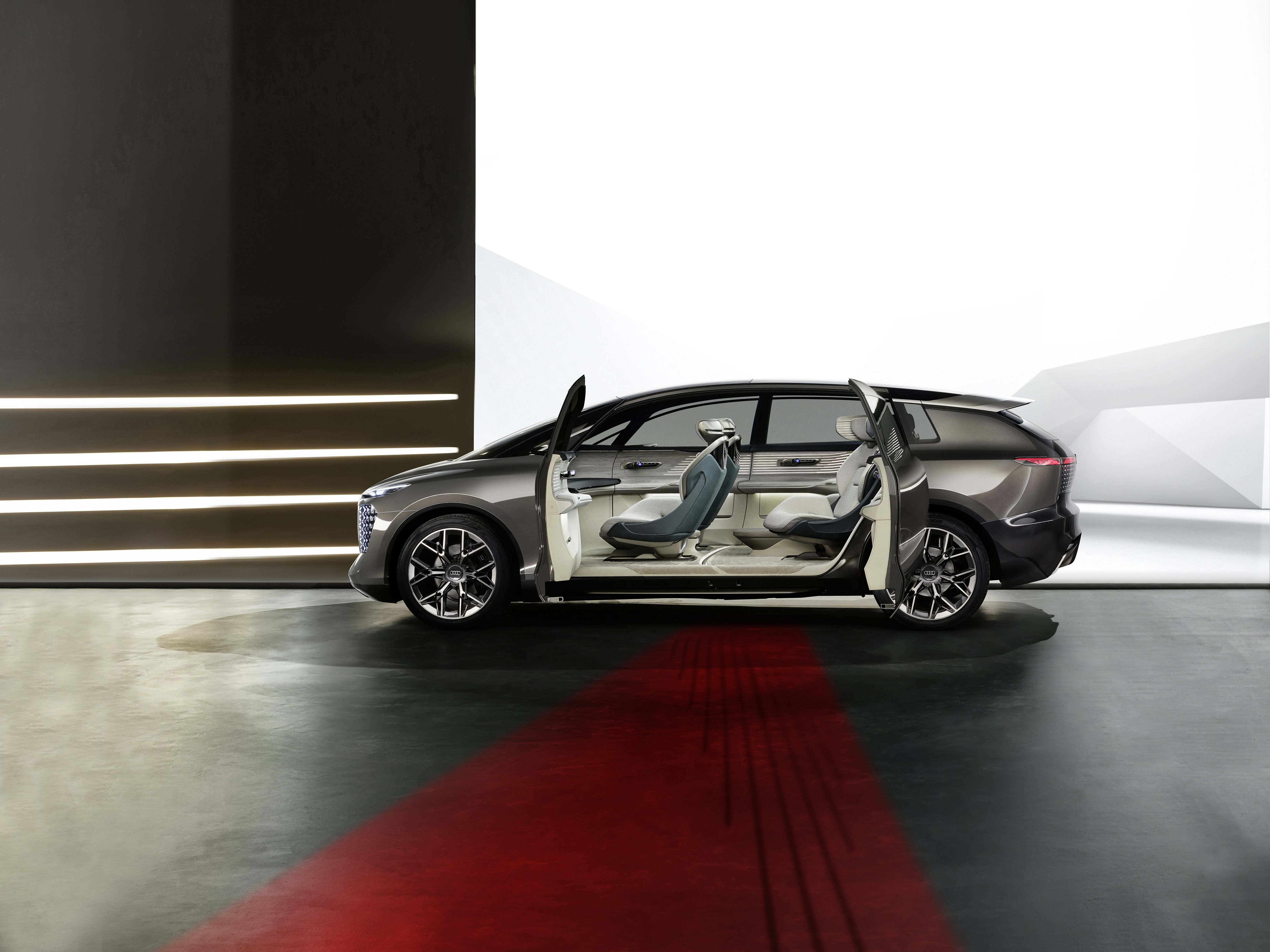 To further liberate the space for passengers, urbansphere adopts a pillarless design with doors that open towards each other. The design of doors that open towards each other has always been a popular element in the world of concept cars, but very few vehicles actually use this design in mass production. This is mainly due to considerations of car body strength and collision testing. Under the current cost and material technology conditions, mass production vehicles with such doors are often small cars with limited space, such as the BMW i3 and the Mazda MX-30. However, it is not impossible to mass-produce cars with doors that open towards each other on a large scale, as carbon fiber material can meet the body strength requirements under such a design. Although it is difficult to repair a carbon fiber body after a collision, its strength is already very high. Die-casting bodies also have issues with repair costs, but as long as the costs in the automobile manufacturing process can be reduced through economies of scale, this will not be a problem.
To further liberate the space for passengers, urbansphere adopts a pillarless design with doors that open towards each other. The design of doors that open towards each other has always been a popular element in the world of concept cars, but very few vehicles actually use this design in mass production. This is mainly due to considerations of car body strength and collision testing. Under the current cost and material technology conditions, mass production vehicles with such doors are often small cars with limited space, such as the BMW i3 and the Mazda MX-30. However, it is not impossible to mass-produce cars with doors that open towards each other on a large scale, as carbon fiber material can meet the body strength requirements under such a design. Although it is difficult to repair a carbon fiber body after a collision, its strength is already very high. Die-casting bodies also have issues with repair costs, but as long as the costs in the automobile manufacturing process can be reduced through economies of scale, this will not be a problem.
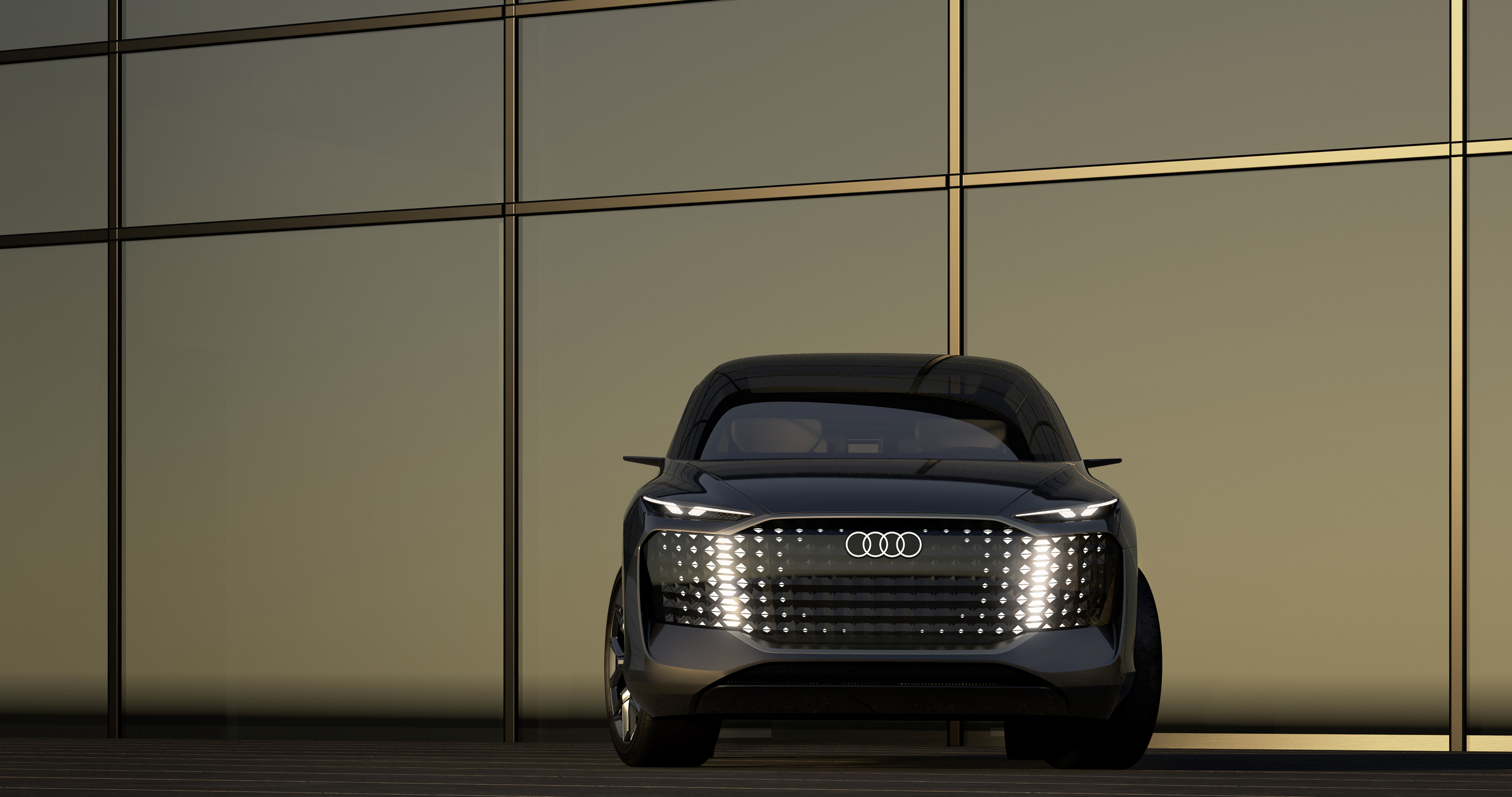
The entire illuminated matrix is integrated into the air intake grille position on the front face of urbansphere. In the past, the air intake grille was an element related to the engine in fuel cars and was an important component of the brand’s iconic front face design: car companies would make big changes to the grille’s shape to give consumers hints of performance or luxury. In the era of electrification, from a technical point of view, it is not necessary to open a large opening in the front of the car, even for battery module ventilation and cooling. However, due to past historical images, traditional car companies such as Mercedes-Benz, BMW, and Audi will not easily give up the air intake grille. Even the latest fuel cars from Audi have a big mouth, so in electric cars, especially in concept electric cars like urbansphere, Audi needs to play some new tricks to “build on past achievements”- the matrix headlights are Audi’s window to showcase the intelligence of their vehicles and give them a personalized touch.
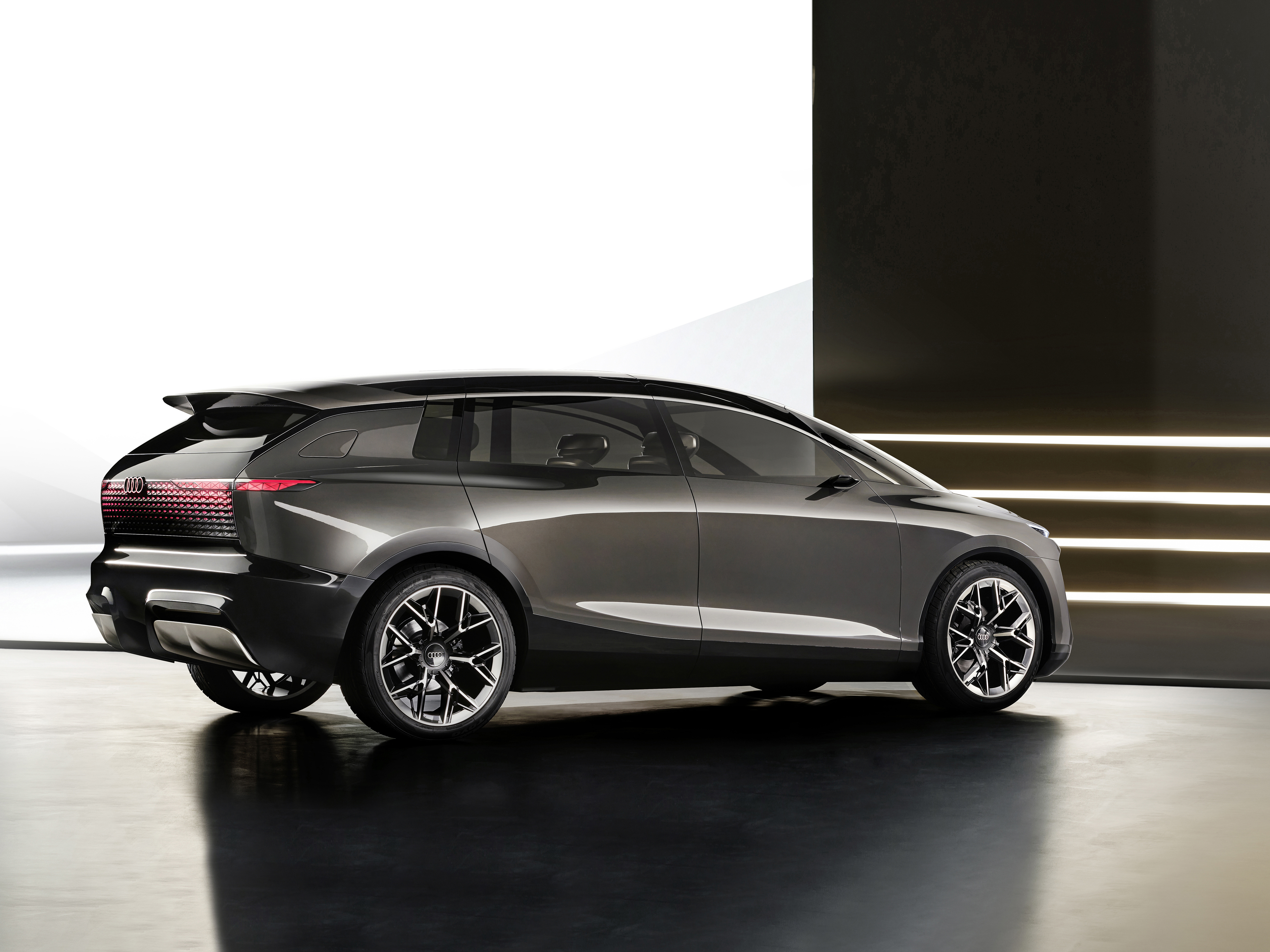
In March 2022, Audi released the A6 Avant e-tron, which is very similar to the mass production version and is equipped with lighting modules that can be used as projectors. On urbansphere, the lighting modules’ displayed images and animations can be customized. In addition to satisfying the personalized expression of the owner, the intuitive visual information conveyed by the lighting module can also indicate whether the vehicle is in autonomous driving mode. In most cases, it can even replace the head-up display module and directly project relevant information about the vehicle’s driving on the ground, or interact with other participants in traffic. For example, when parking, it can warn passing bicycles that the door is about to open, or send warning messages to drivers of other vehicles when the distance between the two vehicles is too close. It can even project necessary first aid information and demolition instructions in the event of an accident involving the vehicle. Audi has been making rapid progress in lighting design and the upcoming models are very likely to adopt urbansphere’s lighting technology.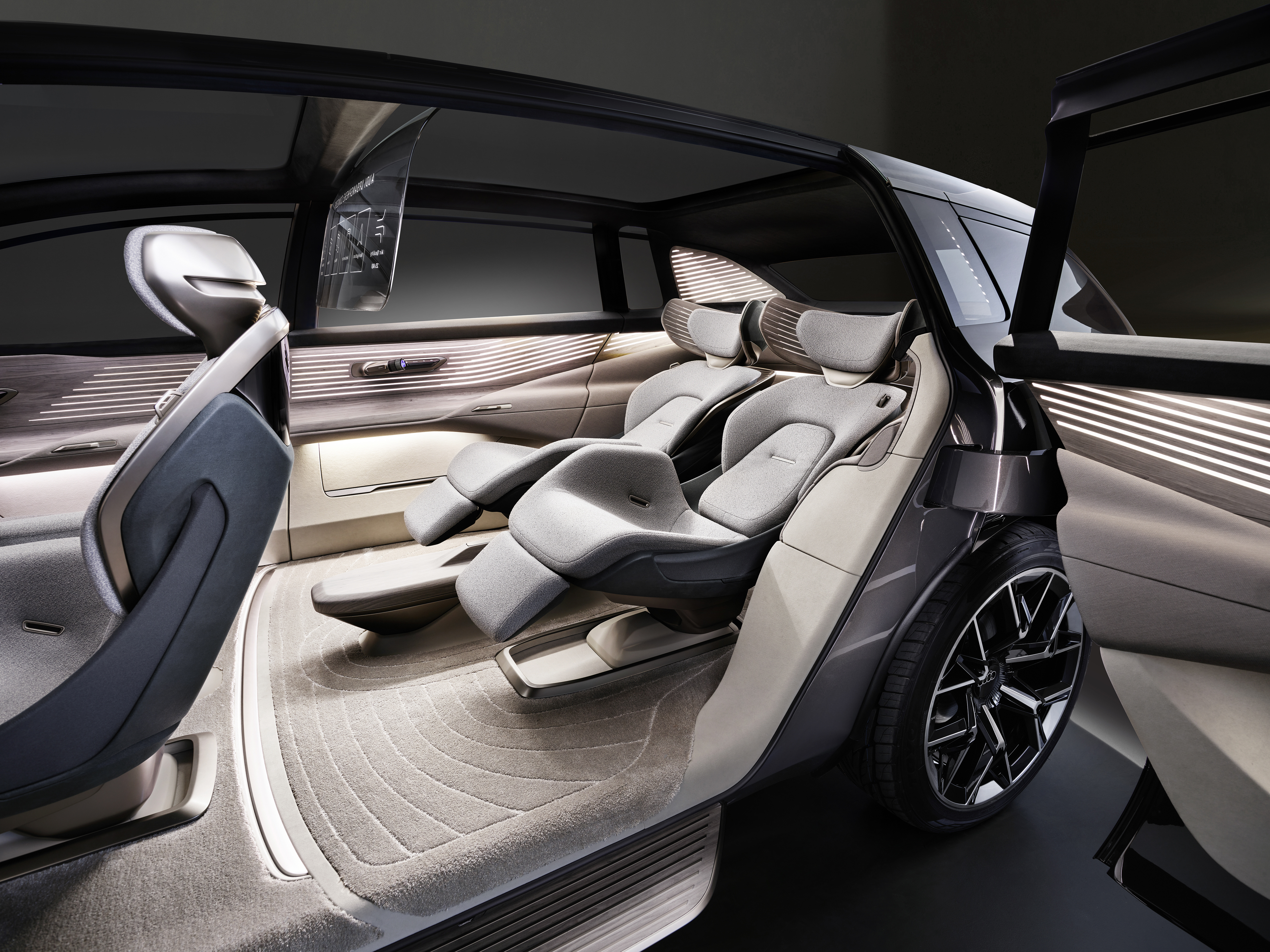
Sitting inside the urbansphere, in addition to the rich details such as fabric, wood grain, metal, etc., the lighting and interaction design of the urbansphere interior are worth seeing: thanks to Level 4 autonomous driving capability, the driver is truly freed from the decision-making and supervision of vehicle driving, and the senses are no longer restricted by driving. Therefore, the ambient light does not need to consider the visual interference of the driver at night. The light source under the seat is used as the basic lighting, and then the light strip is used to create an atmosphere by embracing the cabin from the rear and burying it behind the panel. In addition, the urbansphere abandons the self-luminous glass central control display, which reduces the reflection in the cabin and makes the curves and shapes in the dashboard area smoother, avoiding the invasion of “overly regular and reflective” objects into the line of sight.
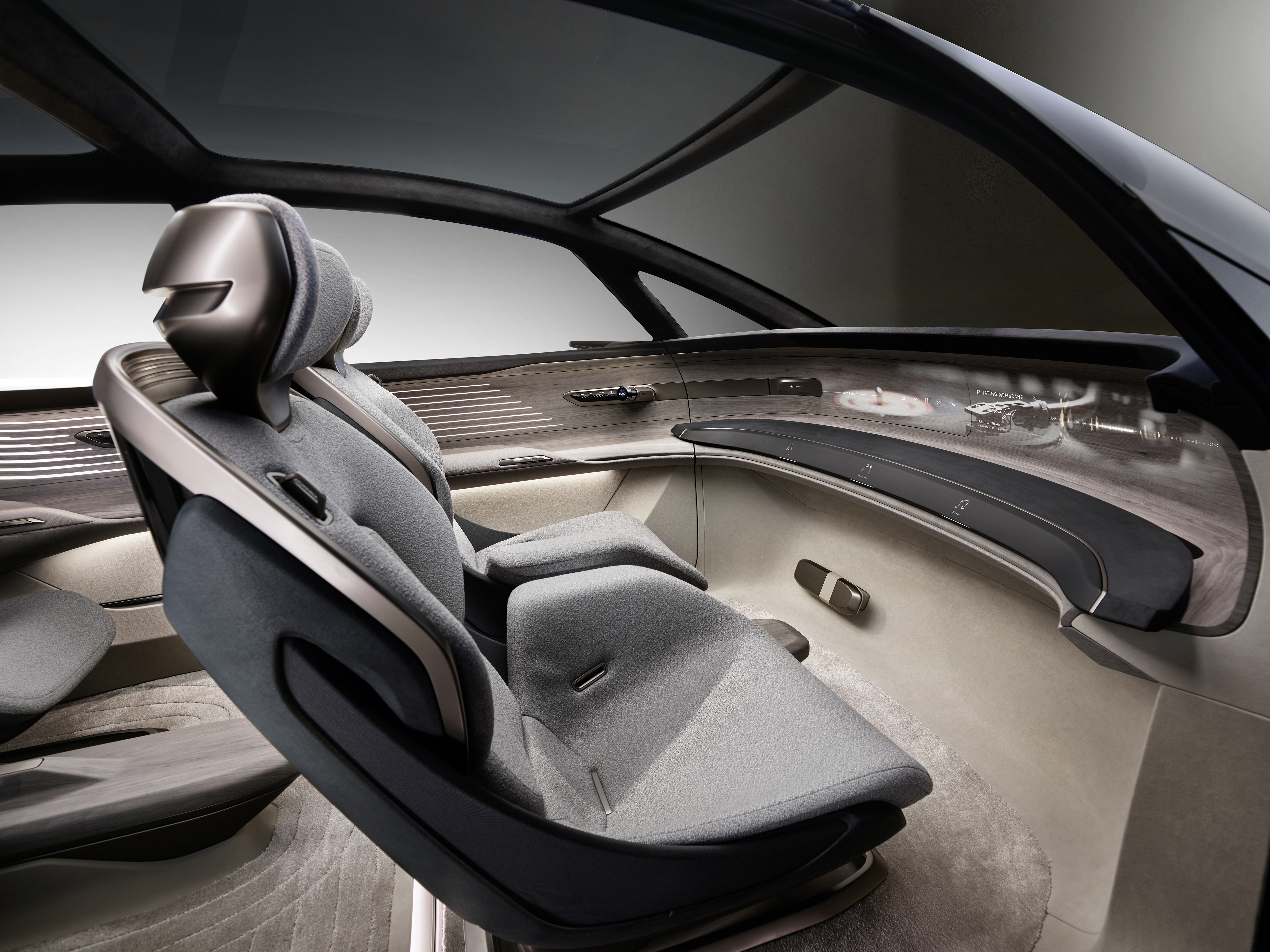
The Level 4 autonomous driving capability is also an important premise for the interaction design of the urbansphere. Because the driver’s sensory channel for receiving information is at the same level as all passengers, there is no need to specifically emphasize an interaction mode based on a certain type of sense: in the demonstration, Audi’s digital intelligent assistant image is four pulsating light circles, which interact with passengers through continuous dialogue during the vehicle’s operation. At the same time, the urbansphere also supports gestures and touch, and provides a holographic projection screen that can be operated by touch for passengers sitting in the rear. Giving a car a personality and emotions requires interaction with people, including facial recognition. The urbansphere supports monitoring the health status of passengers and using multiple dimensions of interaction channels from voice to gesture to hide the cold mechanical attributes of the car and turn it into a mobile travel companion.
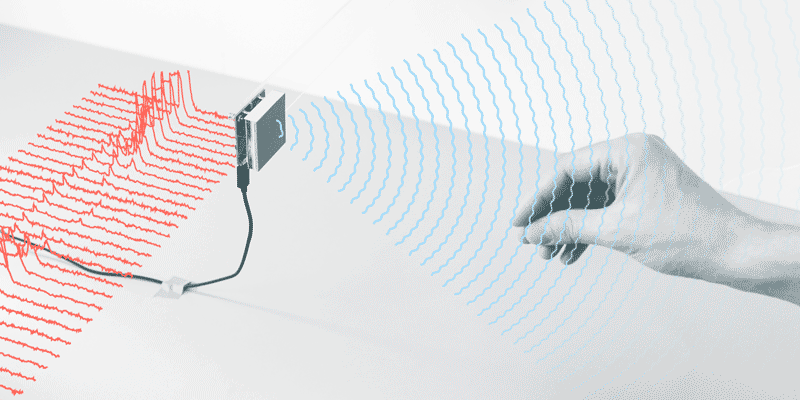 Providing users with emotions during the use of their cars is feasible, even without advanced driver assistance systems as a prerequisite, as proven by Nomi, NIO’s voice assistant. Nomi is the core of NIO’s intelligent cabin experience design: NIO positioned Nomi at the center of the front of the cabin and arranged the 9.8-inch digital instrument screen, 11.3-inch central control screen, and 10-inch HUD around Nomi. Urbansphere, on the other hand, did not give its intelligent assistant a specific image, but simply expressed the existence of the digital assistant through dynamic dot matrix and four jumping light circles, avoiding anthropomorphic images and the sudden decrease in human likability range.
Providing users with emotions during the use of their cars is feasible, even without advanced driver assistance systems as a prerequisite, as proven by Nomi, NIO’s voice assistant. Nomi is the core of NIO’s intelligent cabin experience design: NIO positioned Nomi at the center of the front of the cabin and arranged the 9.8-inch digital instrument screen, 11.3-inch central control screen, and 10-inch HUD around Nomi. Urbansphere, on the other hand, did not give its intelligent assistant a specific image, but simply expressed the existence of the digital assistant through dynamic dot matrix and four jumping light circles, avoiding anthropomorphic images and the sudden decrease in human likability range.
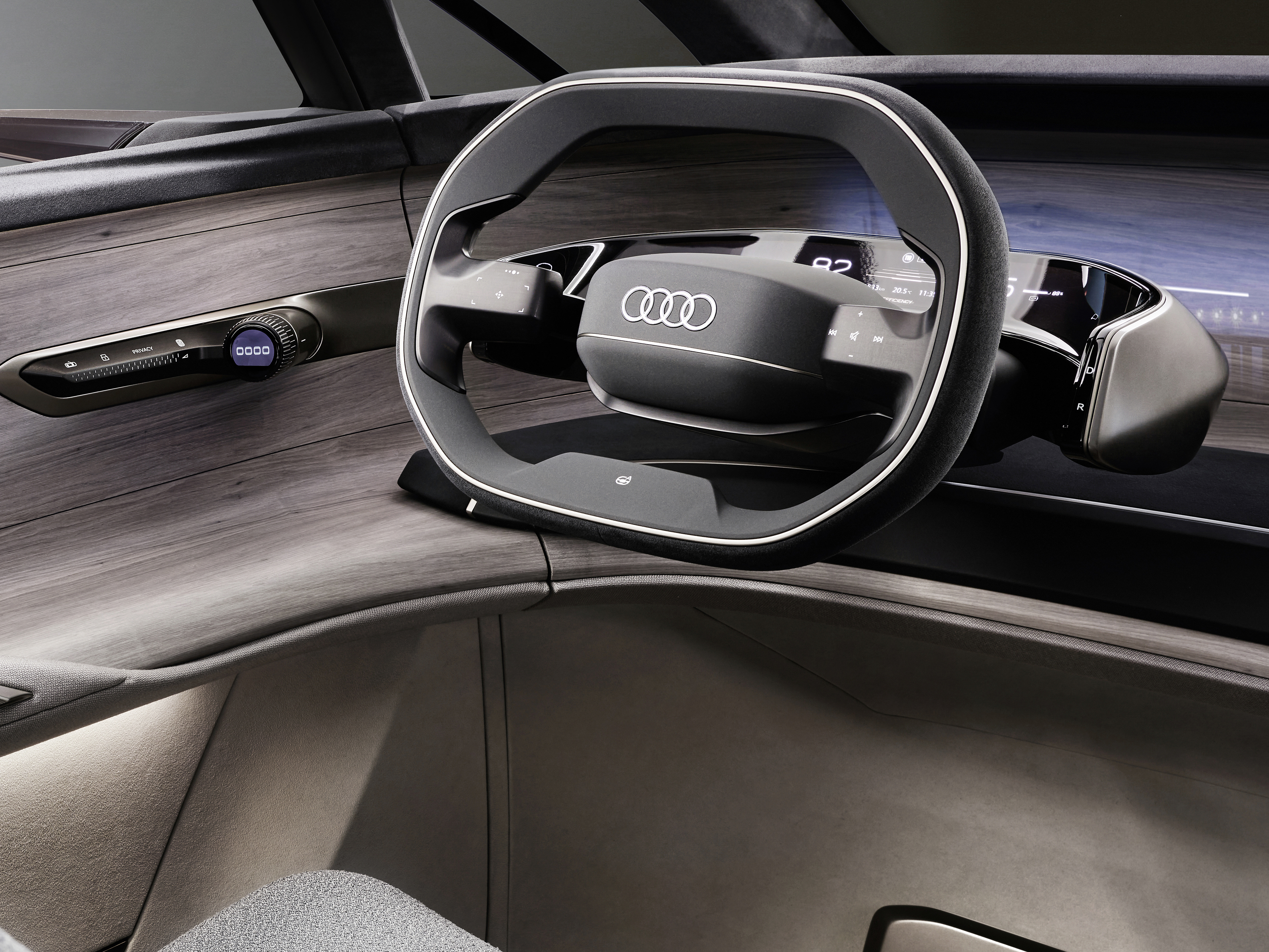
The concept of urbansphere is reflected in its name: “urban” refers to “city,” and “sphere” means “sphere, domain.” The urbansphere concept car represents Audi’s redesign of the MPV model under the background of electrification and intelligence, dedicated to creating an independent space for relaxation and indicating the interior design trend of Audi’s new models by 2025. By 2026, Audi will release more than ten medium and large-sized pure electric vehicles based on the PPE platform in China.
Prior to the launch, Audi directly described the urbansphere concept as follows:
The Audi urbansphere concept is specially designed to meet the needs of customers in major Chinese cities. In areas where personal space is in short supply, this concept car provides the most spacious seating area Audi has ever offered.
Subjective discourse question: When cars become living spaces
Audi’s urbansphere concept reminds me of three other cars, each answering the question of “the X living space” in different ways. From concept to reality, from large to small, they are the most similar to urbansphere concept NIO EVE, the upcoming Volkswagen ID.BUZZ for mass production, and the domestic segment’s city defender and popular single product Li Xiang ONE.

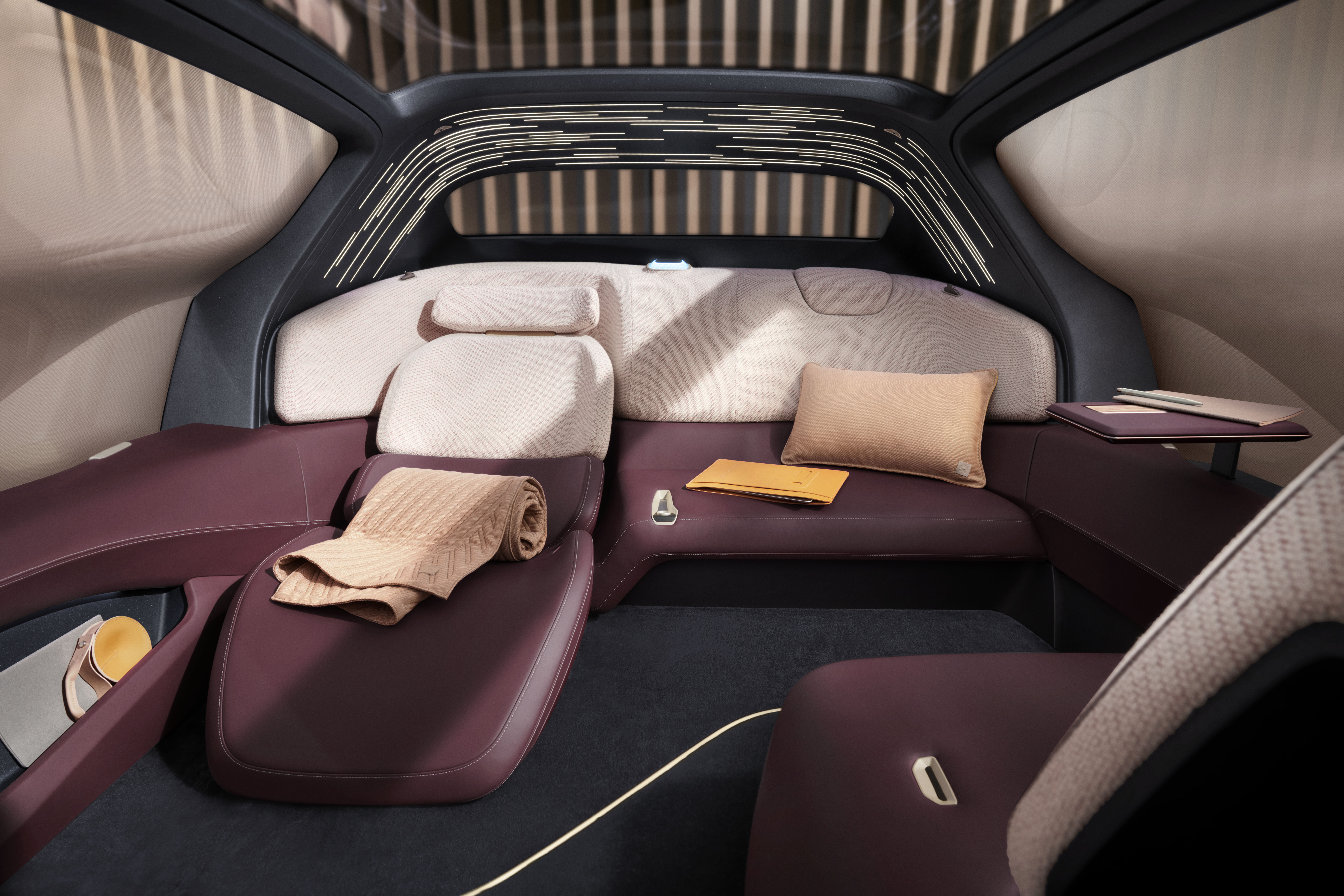
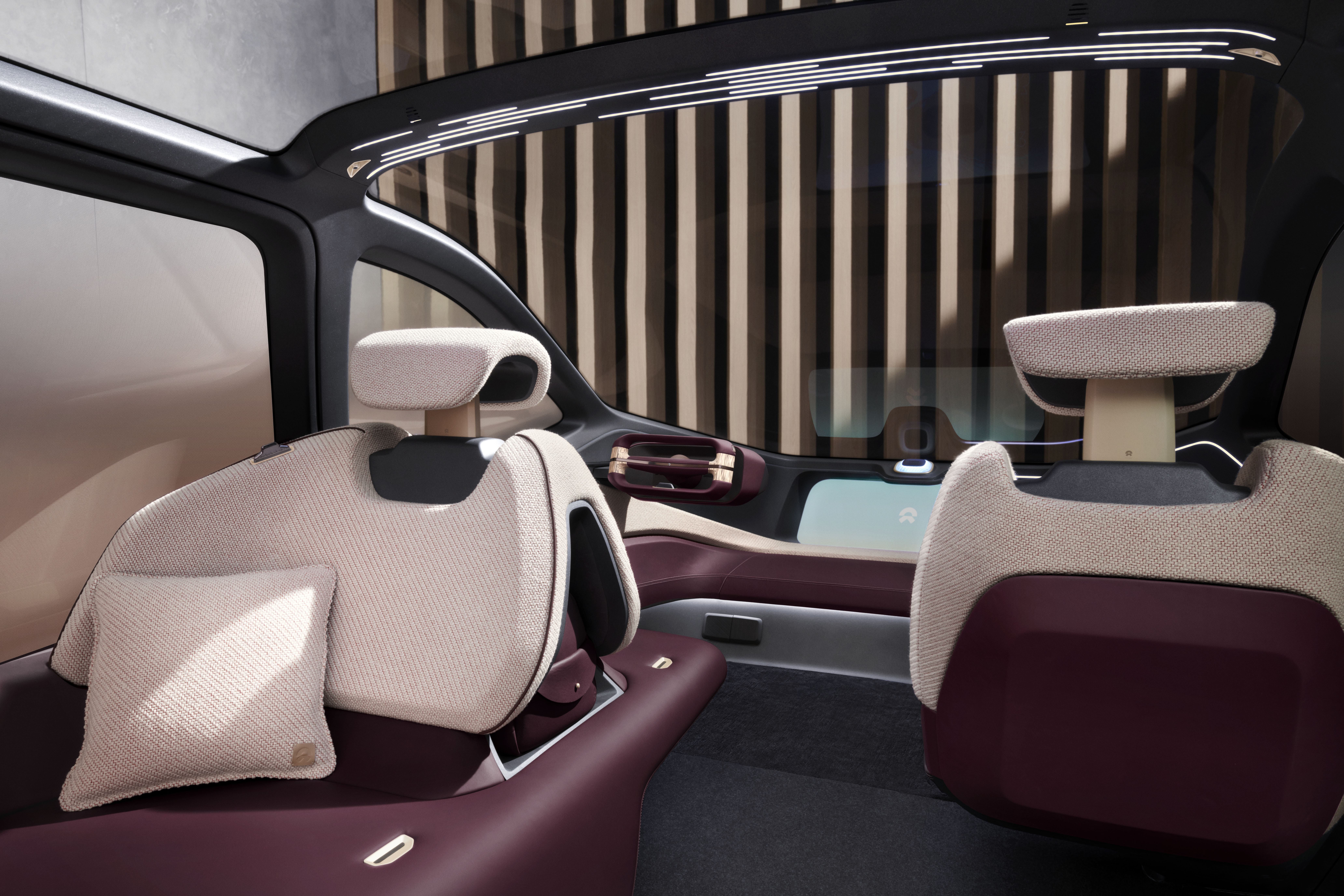
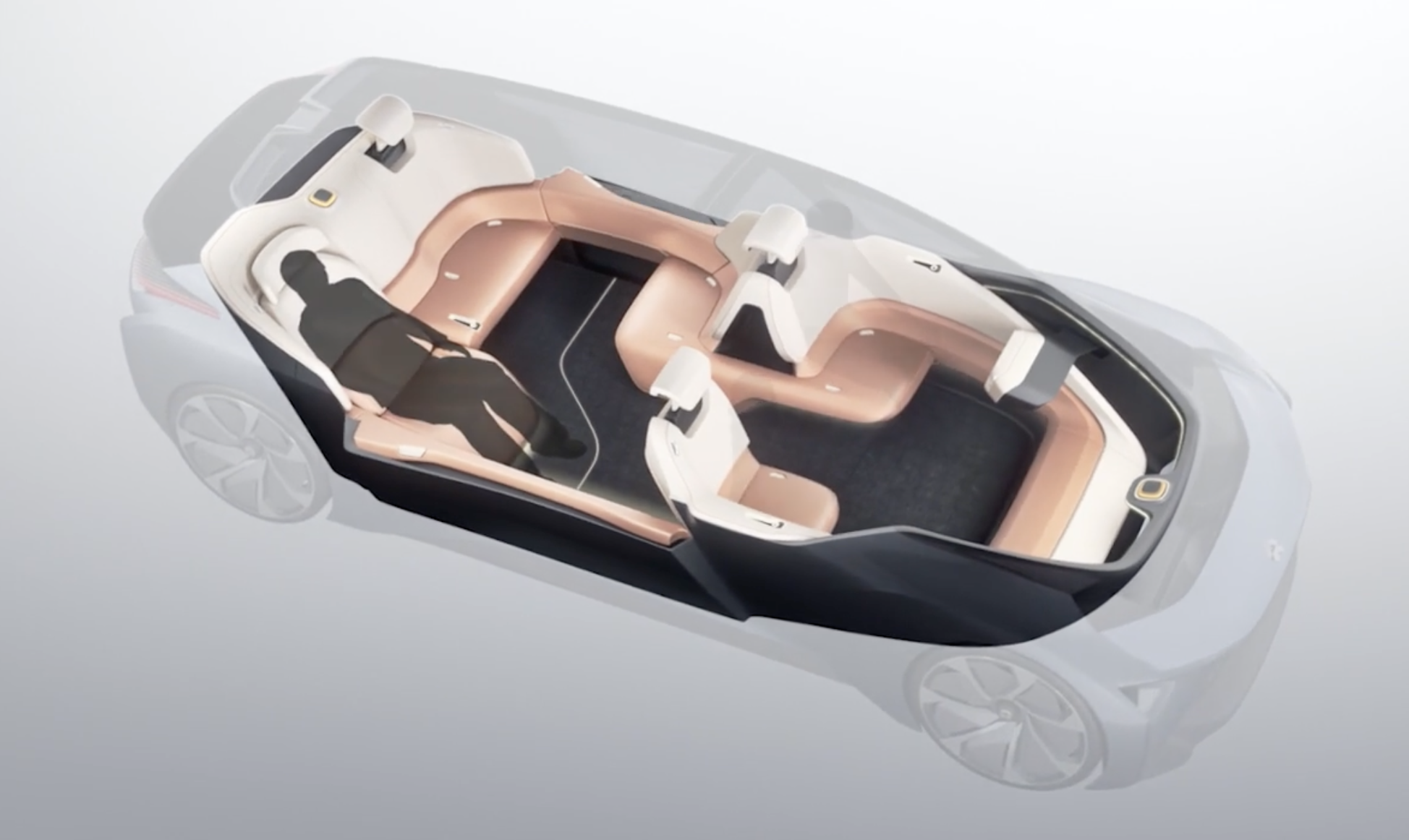
The vision depicted by NIO EVE is based on L4 and even higher levels of autonomous driving technology. With an emphasis on creating a homely atmosphere reflected in the interior design, “The second living room” was adopted as a design concept. The core of the NIO cabin interaction system was also introduced during this exhibition. As shown by various features such as panoramic cabin, holographic screen interaction, and electrochromic glass, NIO EVE attempts to separate or integrate its cabin environment with its surroundings, minimizing its features as a mere driving tool, and making it an emotional partner for both drivers and passengers.
From the first generation ES8 to the ET7, the design theme and concept established by NIO EVE remains consistent across all NIO’s car models and service operations. As a “design and concept benchmark” that reveals the brand’s next strategic plan, the concept car carries great meaning for the brand’s development. Similarly, the Audi urbansphere concept as well as the A6 e-tron, A6 Avant e-tron, which are very close to production models, have also established Audi’s design methods and concepts for their next phase of products.
The Volkswagen ID.BUZZ is a model with an excellent historical tradition. The Volkswagen T1, popular in the 1960s and 1970s’ culture, played a pivotal role in carrying the rebellious lifestyle of a generation.
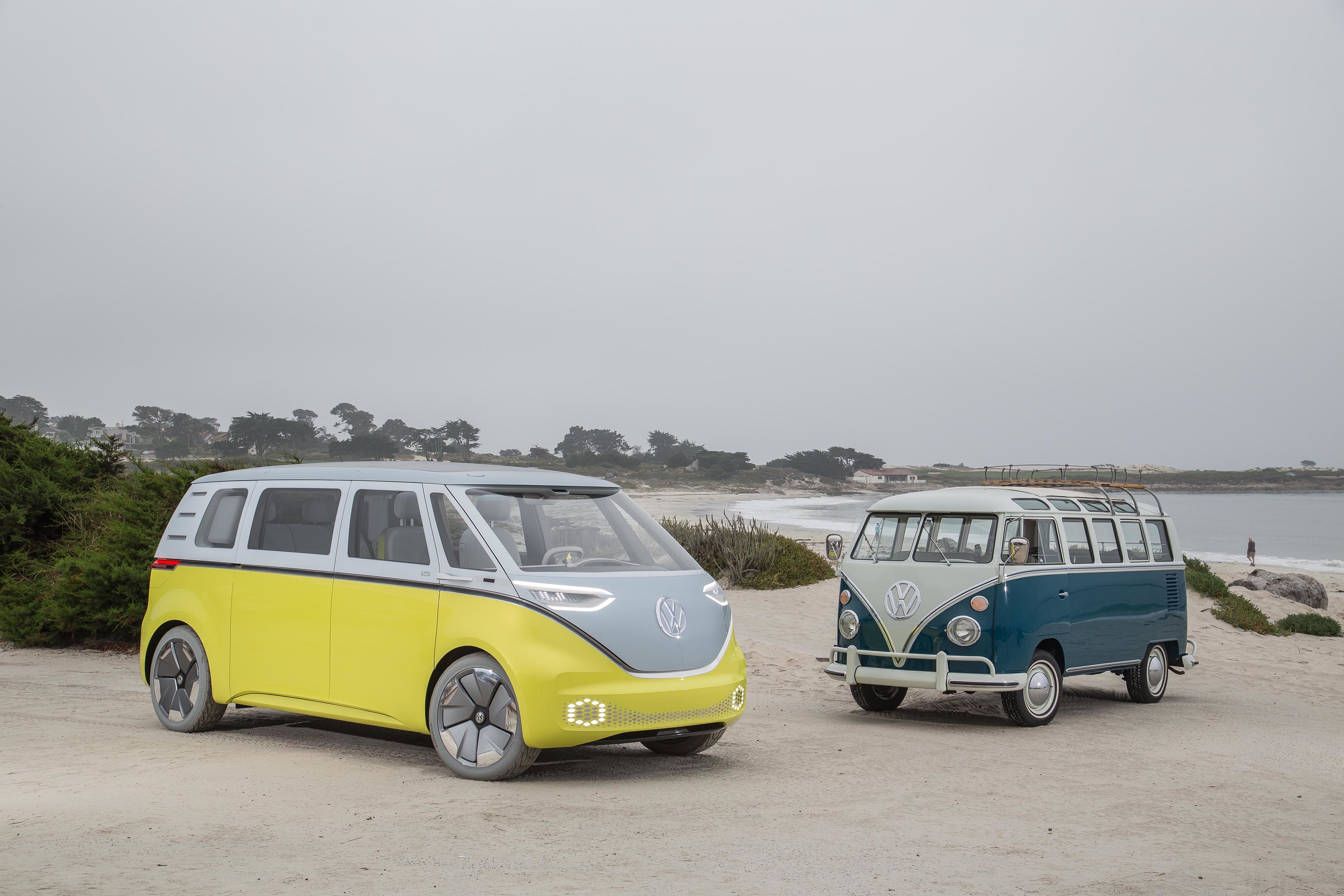 In 2017, Volkswagen decided to put the ID.BUZZ concept car into production, and officially launched the ID.BUZZ and the cargo version of the ID.BUZZ Cargo on March 9, 2022. The flexibility and advanced driving assistance emphasized in the concept car design, such as the ability to rotate the seat 180 degrees in full automatic ID Pilot mode, seem to imply that ID.BUZZ has the potential to “carry your life” like its predecessor Volkswagen T1: spacious body, flexible layout, and wide range of applications.
In 2017, Volkswagen decided to put the ID.BUZZ concept car into production, and officially launched the ID.BUZZ and the cargo version of the ID.BUZZ Cargo on March 9, 2022. The flexibility and advanced driving assistance emphasized in the concept car design, such as the ability to rotate the seat 180 degrees in full automatic ID Pilot mode, seem to imply that ID.BUZZ has the potential to “carry your life” like its predecessor Volkswagen T1: spacious body, flexible layout, and wide range of applications.
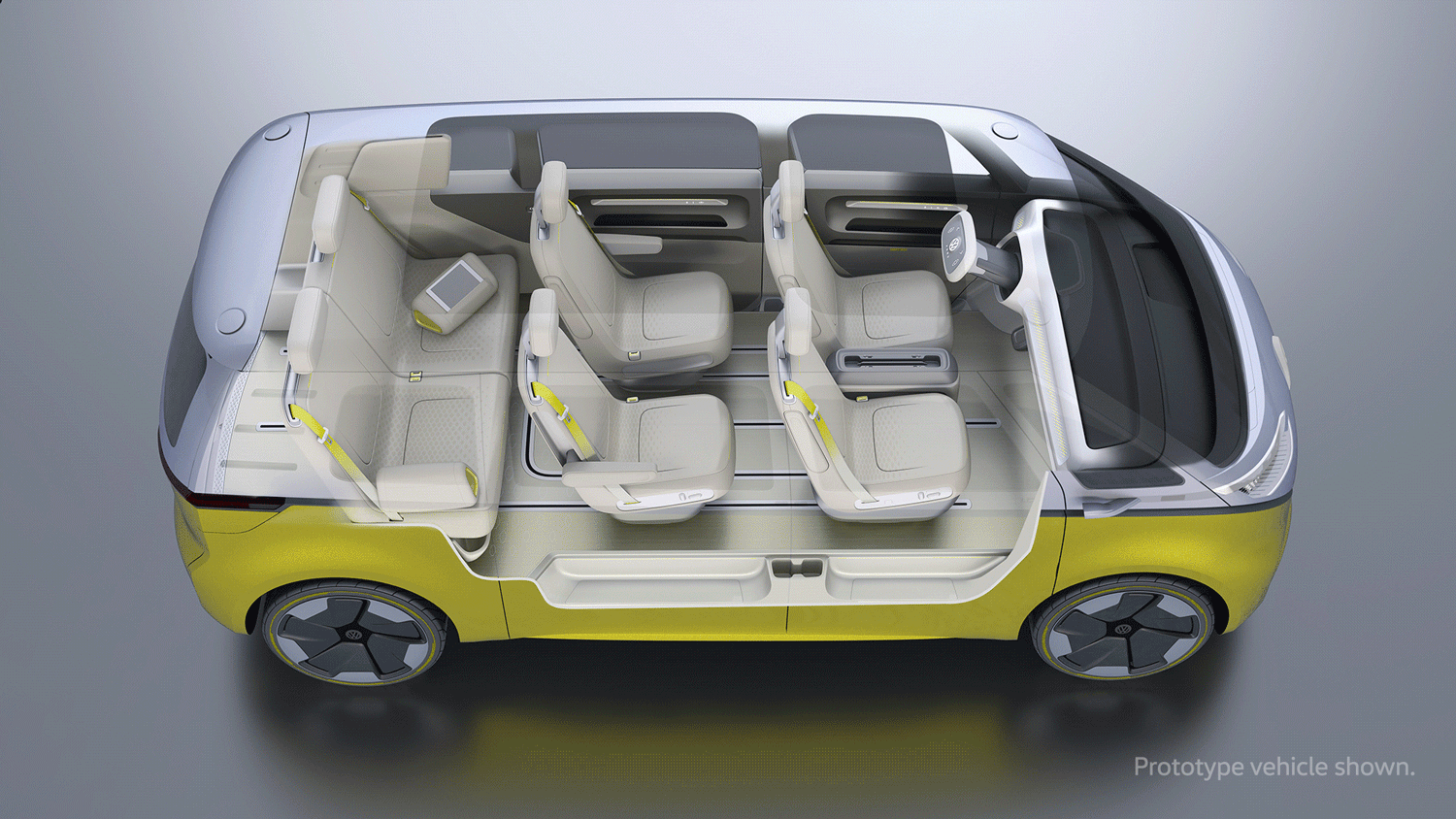
To realize the vision of the ID.BUZZ concept, Volkswagen already has a very clear plan: by 2025, Volkswagen plans to introduce advanced driving assistance functions into the product line, and realize at least L4 level driving assistance system ID Pilot as designed in the concept. ID.BUZZ will then undertake the burden of testing robotaxis and independently developing autonomous driving systems in parallel with Volkswagen’s Argo AI and Car.Software projects.
It can be said that the Volkswagen ID.BUZZ is the closest batch of mass-produced vehicles to the form of a mobile living space so far. If we narrow the goal down a bit and don’t pursue the all-weather, all-day mobile experience like a recreational vehicle, then the Ideal ONE is an obstacle that cannot be bypassed.
Ideal ONE’s understanding of mobile living space is not so greedy – designed for every member of the family with relatively balanced qualities, supplemented by “creating a mobile home”: the SUV vehicle configuration has a wider range of use than the MPV, 40.5 kWh battery pack meets daily commuting needs, pure electric four-wheel drive accelerates to 100km/h in 6.5 seconds, the range extender system that can be charged and refueled can obtain a new energy license plate, standard full-stack independently developed Ideal AD advanced driving system (supporting full-speed adaptive cruise and lane keeping, emergency braking, visual parking, signal light recognition), four independent electric massage seats and spacious body space, as well as the sweet function of external discharging (not the very important main course, but the dessert-like function that improves user experience).
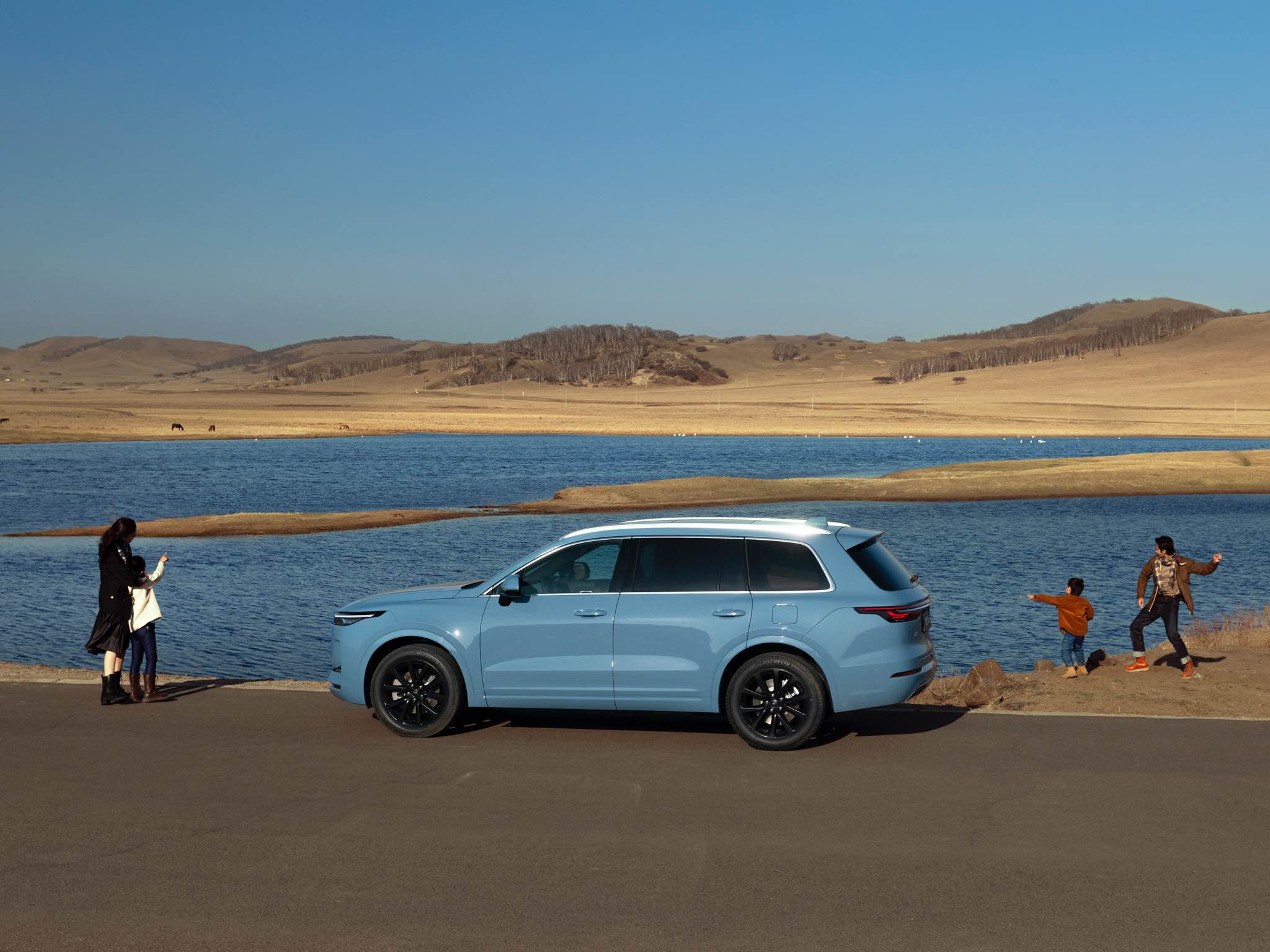 The market performance of LI ONE speaks for itself. In 2021, the company delivered 90,491 units of ONE, generating RMB 27 billion in revenue with this flagship product.
The market performance of LI ONE speaks for itself. In 2021, the company delivered 90,491 units of ONE, generating RMB 27 billion in revenue with this flagship product.
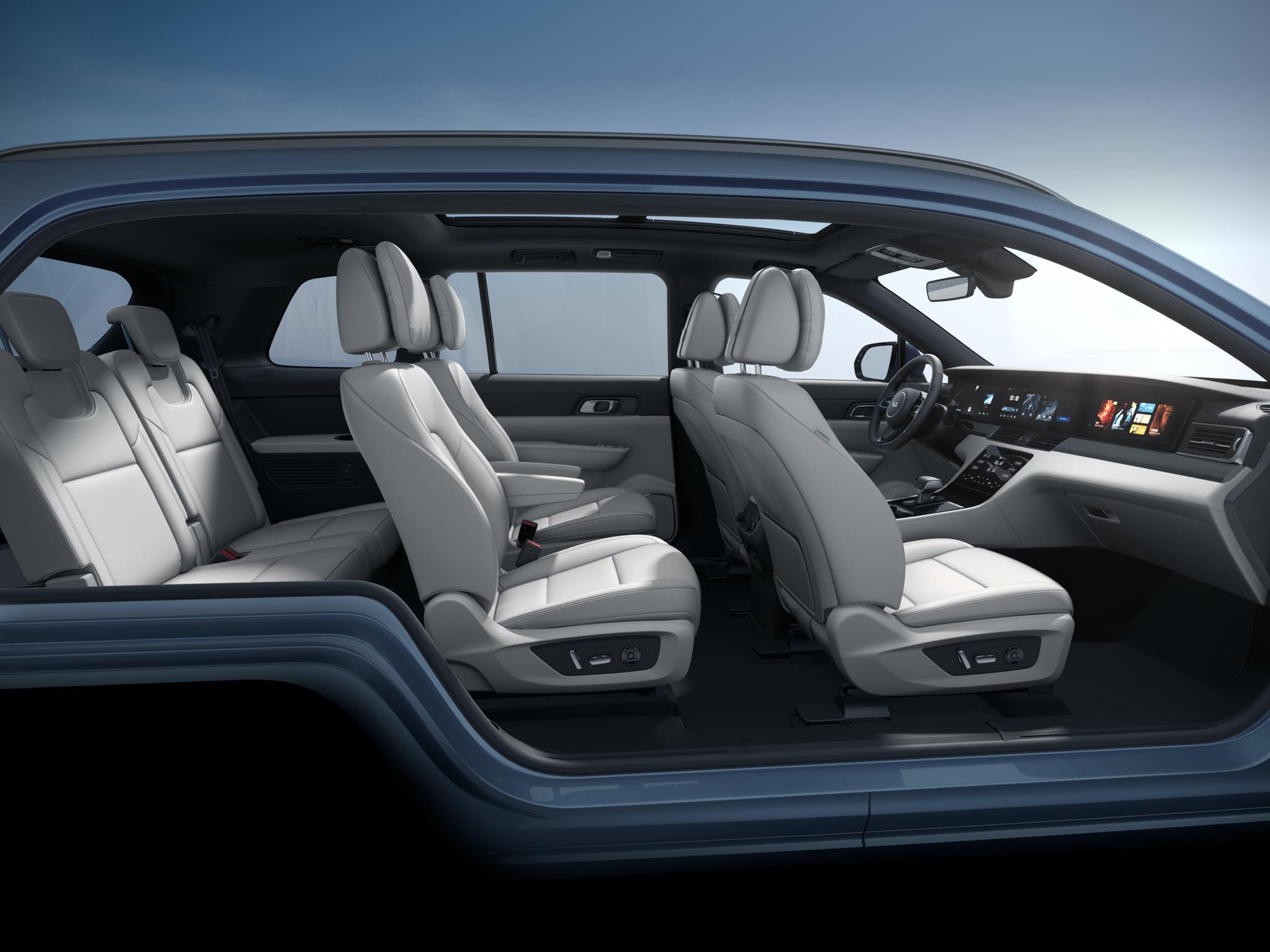
Conclusion
Audi explicitly stated at the launch event that urbansphere is a modern interpretation of the electric MPV vehicle, representing the “third living space” extending from personal life. After seeing the plump and transcendent concept cars, let’s take a look at the hot MPV market in 2022. How much overlap is there between these design concepts and existing MVPs, and what can be sacrificed if the concept cars are to be mass-produced?
Looking at Audi’s urbansphere, NIO’s EVE, Volkswagen’s ID.BUZZ, and LI’s ONE, it seems that the models carrying the “Xth living space” concept have to compromise on emotional experience, design techniques, and intelligent levels. However, the generous interior space is the entry ticket to this segment of the market. In terms of design, the most important aspect of urbansphere is the vehicle’s form, which relies on a compact layout and flexible interior design made possible by the electrification platform. The second is the design techniques for both the exterior and the interior, while the first to be sacrificed is the prospect of fully automated driving technology.
Is driving freedom or driving experience more important? All the concept cars that mainstream automakers are focusing on can be divided into these two categories. However, these two categories should eventually converge, ultimately falling on the occupants’ feelings. Whether the driver chooses to manually control everything or simply lean back and relax as an absentee manager, they all fall under the category of “I may not need it, but you cannot do without it” ── after all, concepts cannot always compromise.
On the other hand, even as the wave of electrification and intelligentization rolls on, the MPV market in China in 2022 is bustling with activity. Dreamer, Voyah, Zeekr, Great Wall… and LI ONE, the one-of-a-kind SUV based on a full-size SUV, is waiting to be launched, as well as the upcoming LI L9 and XPeng G9, all raring to go. However, even with concept cars, imagination about intelligentization is focused solely on automatic driving, and relevant technologies are intended to liberate people from driving labor. The design of the interior and the emotional experience both rely on a presupposition of “liberation from driving.” But people can’t escape their empirical experiences and imaginations of non-existent things. In the future, can concepts of cars only focus on “how to move comfortably”? From the perspective of mass production, it’s not difficult to come up with wild ideas about car design; the challenge lies in making “commitments that can be delivered.”
This article is a translation by ChatGPT of a Chinese report from 42HOW. If you have any questions about it, please email bd@42how.com.
